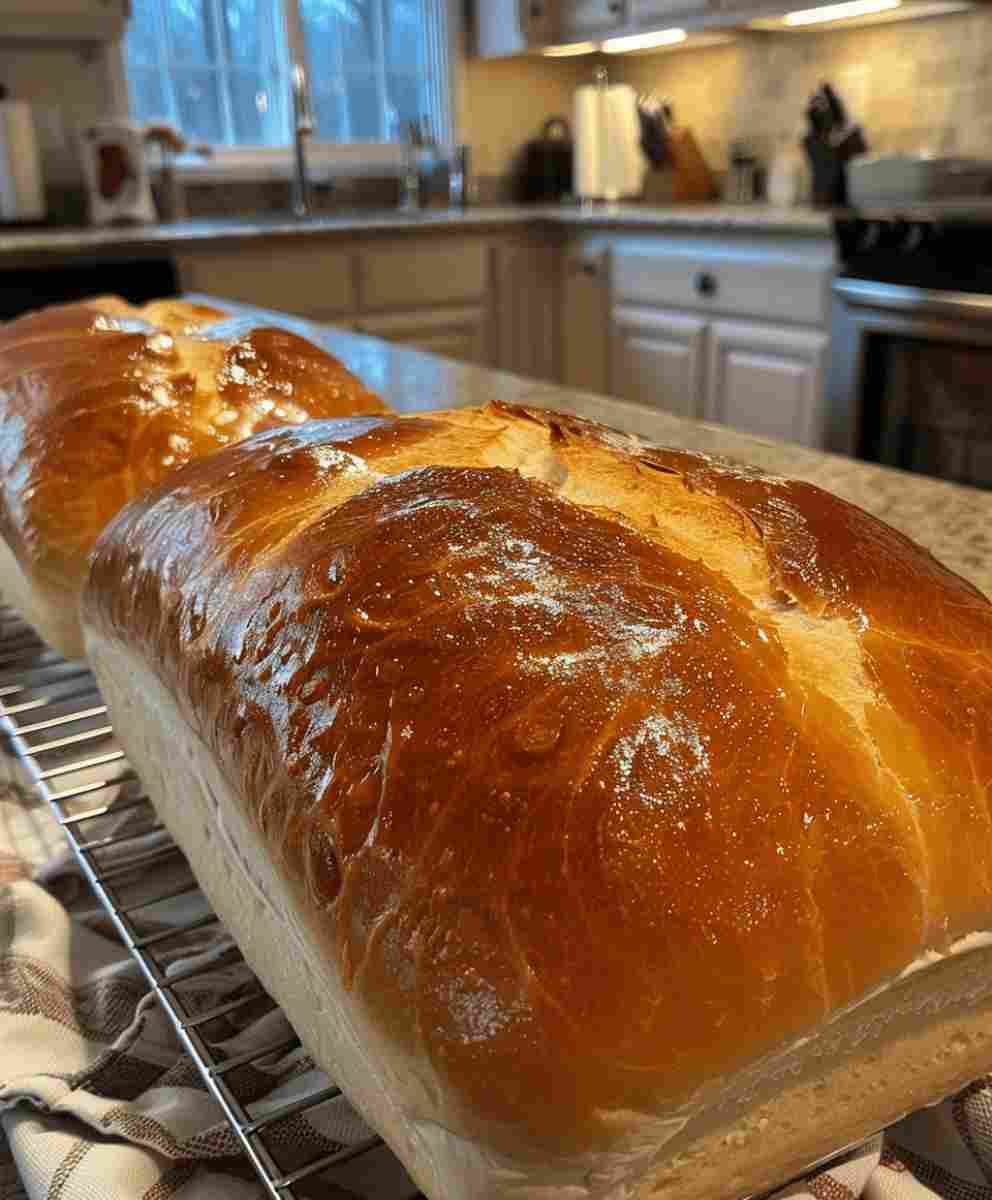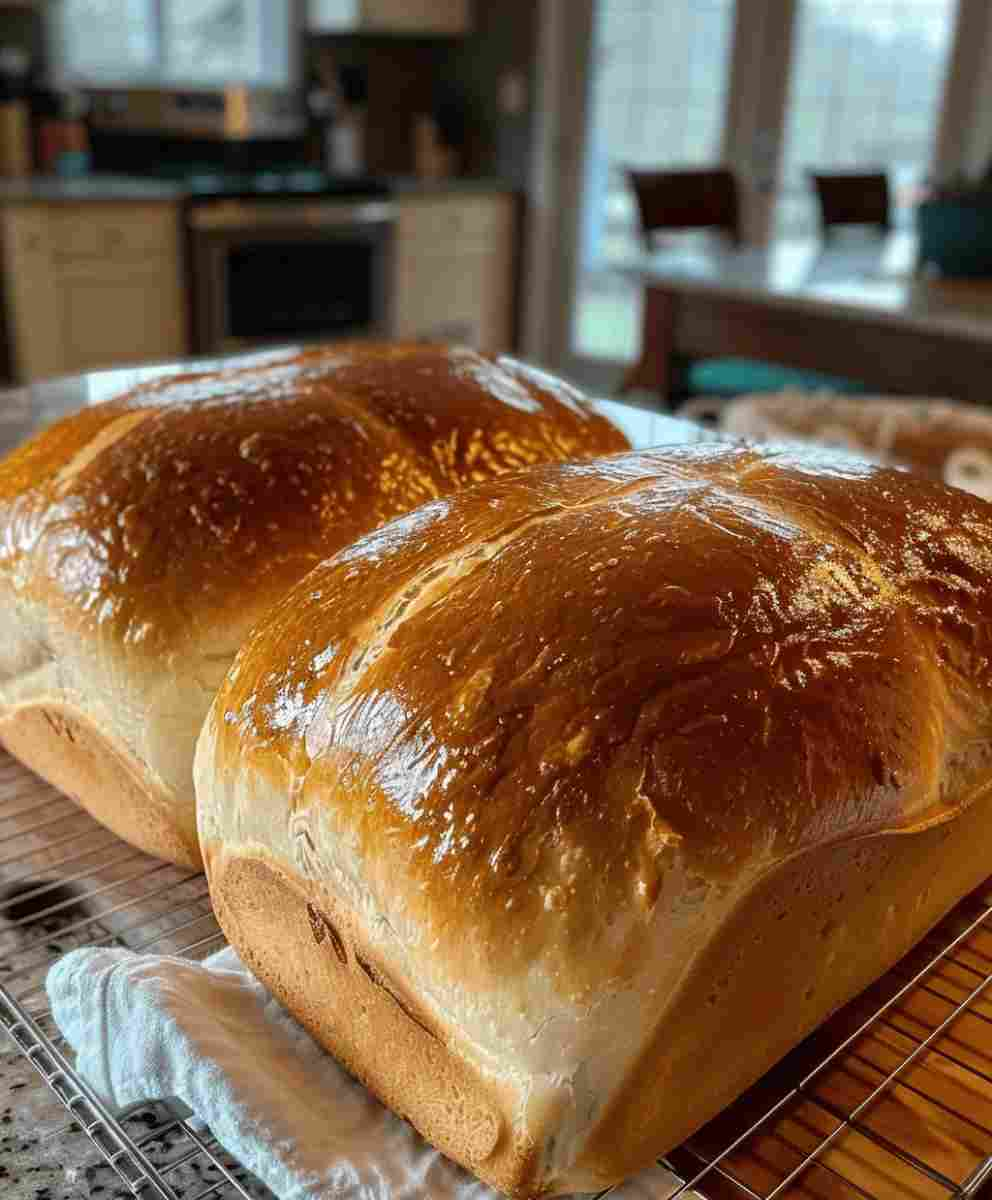Few things compare to the comfort of freshly baked bread, and Amish White Bread is a classic that has stood the test of time. With its soft, tender crumb and hint of sweetness, this bread is perfect for sandwiches, toast, or simply enjoyed warm with butter. It’s a simple, no-fuss recipe that anyone can master, making it a staple in many kitchens for generations.
This homemade bread is known for being reliable, forgiving, and incredibly versatile. Whether you’re a seasoned baker or just starting out, Amish White Bread will quickly become a family favorite.
Why You’ll Love This Recipe
-
Beginner-Friendly: Simple steps and minimal ingredients make it approachable.
-
Soft and Fluffy: The texture is pillowy and perfect for sandwiches.
-
Slightly Sweet: Just enough sugar to balance the flavor without being overly sweet.
-
Versatile: Works for sandwiches, French toast, or as a side with dinner.
-
Homemade Comfort: Fresh-baked bread that fills your kitchen with a warm, nostalgic aroma.
Ingredient Breakdown
Warm Water: Activates the yeast. Be sure it’s not too hot or it may kill the yeast.
Sugar: Feeds the yeast and adds just a touch of sweetness.
Active Dry Yeast: The leavening that makes the bread rise.
Vegetable Oil: Keeps the bread moist and tender. Can substitute with melted butter.
Salt: Balances the sweetness and enhances flavor.
All-Purpose Flour: Gives the bread structure while keeping it soft.
Pro Tips
-
Check Your Yeast: If the yeast doesn’t foam after 10 minutes, it’s expired or the water was too hot/cold. Start again for the best rise.
-
Kneading Matters: Knead until smooth and elastic—this develops gluten for structure.
-
Don’t Rush Rising: Let the dough fully double for the best texture.
-
Egg Wash (Optional): Brush the loaf with beaten egg before baking for a shiny, golden crust.
-
Cool Before Slicing: Resist cutting into the bread too soon—it sets as it cools.
Ingredient Swaps or Variations
-
Honey Instead of Sugar: For a natural sweetness and richer flavor.
-
Butter Instead of Oil: Creates a richer, slightly denser loaf.
-
Whole Wheat Version: Replace up to 1 cup flour with whole wheat for added nutrition.
-
Herb Bread: Add dried herbs like rosemary or Italian seasoning for a savory loaf.
-
Cinnamon Swirl: Roll dough with cinnamon sugar before the second rise for a sweet twist.
Serving Suggestions
-
Classic sandwiches with turkey, ham, or roast beef.
-
Thick slices toasted with jam, honey, or Nutella.
-
Served alongside soup or stew for a cozy meal.
-
Turn into French toast or bread pudding for a comforting dessert.
Make Ahead + Storage Tips
Make Ahead: Dough can be prepped and refrigerated overnight, then baked the next day.
Storage: Store bread at room temperature in a sealed bag for 3–4 days.
Freezing: Wrap cooled loaf tightly in foil and freeze for up to 3 months. Thaw at room temperature and reheat slices if desired.
Cultural or Historical Notes
This recipe is called “Amish White Bread” because it reflects the simple, wholesome, and resourceful style of Amish baking. The Amish are known for recipes that use pantry basics and create reliable, comforting food meant to nourish families. This bread became a favorite in many American households because it’s inexpensive, easy to make, and consistently delicious.
Frequently Asked Questions (FAQ)
Can I use bread flour instead of all-purpose flour? Yes, bread flour will give a chewier texture, but all-purpose keeps it soft.
Why is my bread dense? It may not have risen enough, or the yeast wasn’t active.
Can I double the recipe? Absolutely—this dough doubles well for two loaves.
How do I keep the crust soft? Brush with melted butter right after baking.
Can I make rolls instead of a loaf? Yes, divide into 12 pieces, roll into balls, and bake 20–25 minutes.

Amish White Bread
Ingredients
Equipment
Method
- In a large mixing bowl, dissolve the sugar in warm water. Sprinkle the yeast over the top and let sit for 5-10 minutes until frothy.
- Stir in the vegetable oil and salt. Gradually add the flour, one cup at a time, mixing well after each addition until a soft dough forms.
- Turn the dough out onto a lightly floured surface and knead for 6-8 minutes until smooth and elastic.
- Place the dough in a lightly greased bowl, turning to coat. Cover and let rise in a warm place for about 1 hour, or until doubled in size.
- Punch down the dough and shape it into a loaf. Place it in a greased 9x5-inch loaf pan. Cover and let rise again for 30 minutes, or until just above the pan edge.
- Preheat oven to 350°F (175°C). Bake the bread for 30-35 minutes, or until golden brown and hollow when tapped.
- Cool in the pan for 5 minutes, then transfer to a wire rack to cool completely.

